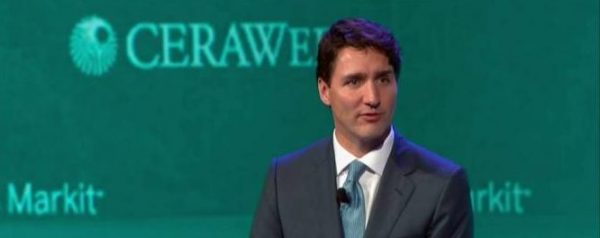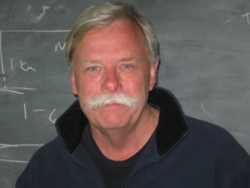
Energy technology is changing rapidly, Canada risks being left behind unless it prepares for future with national energy strategy
The premiers met last week and one of the topics on the table was the “Canadian Energy Strategy,” which is turning out to be all platitudes and pablum, the typical Canadian approach to contentious policy issues. But as economist Michal C. Moore explains in an interview, energy technology and markets are changing rapidly and Canada, normally thought of as a vast storehouse of energy, is in danger of becoming one of the losers in the global Energy Transition.

Put simply, Canada doesn’t know what it wants.
“Energy strategy is a guidebook for what we want to be. Is that a nation that exports raw supplies of energy in one form or another, including hydro electric in the east? Or do we want to be a manufacturing nation, developing and making energy-related technology that other countries buy from us? Or do we want to be a banking nation like Swizerland, basing our future on financing energy and carbon markets?” Moore asks.
“What is our strategic intent?”
Good question.
If Canada was the United States – home to super-major oil and gas companies, the world’s large energy tech manufacturing sector, vast quantities of oil and gas, easy access to tidewater and international markets, and access to capital that Canada can only dream about – then strategic intent might not be as important, says Moore.
But Canada is not the USA. Energy resources – especially oil and gas – are far from markets and don’t have easy and cheap transportation access. Energy policy is mostly dictated by the provinces, which have constitutional jurisdiction over resources and their development, and the provinces rarely agree, as illustrated by the ongoing spat between Alberta and British Columbia over pipelines to the West Coast.

Then there is the Big Daddy of them all: the Energy Transition.
The global economy current gets 82 per cent of its energy from fossil fuels, according to the International Energy Agency. By 2100 at the latest, that percentage will be reversed, with the world getting most of its energy from electricity generated by hydro, wind, solar, tidal, or geothermal. Nuclear might even be a big player by then.
How do we get from here to there?
Oh, and when Canada arrives at the end of the century it would be nice to have a functioning economy that has found a competitive advantage for economies like Alberta and Saskatchewan that currently depend heavily upon fossil fuels.
“If you haven’t gone through and done the homework to identify your strategic intent, then what you’re left with is an ad hoc approach to whatever industry is popular today,” Moore says.
“Those industries might be regionally popular because there are large operations involved, but meta-regionally unpopular where people don’t have a clue where their fuels come from or what makes the lights go on.”
Canada has not done its homework. Not even close, judging by the Canadian Energy Strategy, which includes the following “vision” for the future:
Canada is a global leader in providing a secure, sustainable and reliable supply of energy that is delivered with a high standard of environmental and social responsibility, consistent with efforts to reduce greenhouse gas emissions, and contributes to continued economic growth and prosperity for all Canadians.
Motherhood statements all. And the objectives and principles in the strategy document are cut from the same cloth.
What does the “secure, sustainable and reliable supply of energy” look like for Canada? Is our country’s future about generating electricity for export or is it about developing and building the technology that enables the electricity economy of the future?
What about oil and gas, the subject of much animosity between Canadians on both sides of the oil sands/pipelines issue?
“There will always be a use for oil,” says Moore, but the economies of the future will likely stop burning it and instead make advanced materials with it.
“Oil is too fragile a market in the face of urban congestion and alternative transportation, alternative technologies. The Energy Information Administration data I read suggests we’re closing in on the last two decades or so of active growth in demand for gasoline and the combustible part of a barrel of oil, which is maybe 22%.”
Moore says the smart play is to start thinking now about those future uses of oil.
“What do we want to try and perfect that we know how to do? What’s going to work in the future? That’s a big part of a strategy,” he said.
Moore wrote a policy paper in 2015 – back when he was at the School of Public Policy at the University of Calgary; he’s now lecturing at Cornell – that sets out the framework and process for Canadians to arrive at a national energy strategy.
Given the fractious nature of the subject and the competing jurisdiction and attitudes toward fossil fuels of the provinces, Moore recommends that the Canadian government take the lead in developing a true energy strategy for the country.
The puts Prime Minister Justin Trudeau squarely on the hot seat.
We know the Trudeau government explicitly accepts the idea of the Energy Transition, thanks to my interview with Natural Resources Minister Jim Carr last year.
But “we need both wind turbines and pipelines” is a platitude, not a vision for Canada’s energy future.
As Moore says, Canada needs to stop deciding energy policy based upon specific projects, like pipelines, and begin the hard work of coming up with a long-term energy strategy that includes buy in from the provinces and Canadians in general.
The next move is yours, Prime Minister. Tick tock, times ‘a wasting.



Be the first to comment